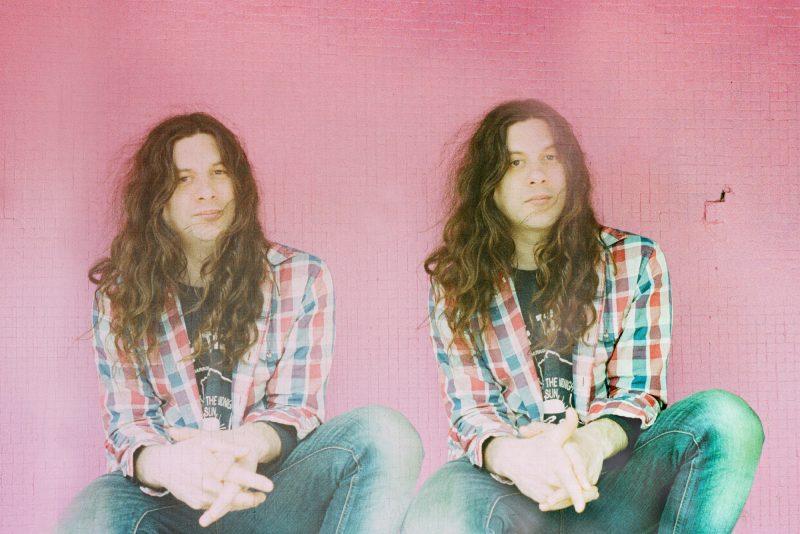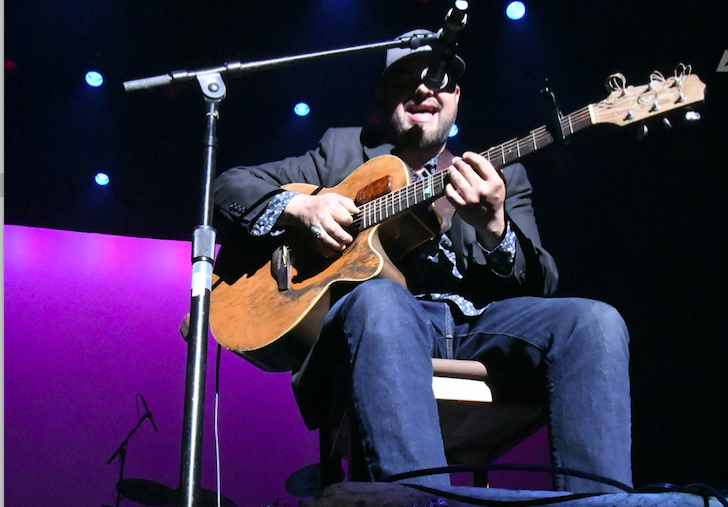Kurt Vile has had quite a journey. Following his stint as lead guitarist of War on Drugs, the Philadelphia-based singer songwriter has released seven solo albums, finding mainstream success with his 2015 work b’lieve i’m goin down… and its leading track “Pretty Pimpin’” as well as his 2017 collaborative record Lotta Sea Lice with fellow songwriting powerhouse Courtney Barnett. The project and a combination of lengthy tours and much needed breaks, delayed his latest release, recorded in the course of his cross-country travels over two years, but left room for a beautiful display of contemplation.
Bottle It In is a dreamy, hypnotic collection of songs that maintain Vile’s standard simple, drawling, observatory lyricism that feels so profound—phrases that stick with you and swirl in your brain and leave fellow songwriters wondering, “Why didn’t I think of that? Because I couldn’t.”
Vile recently talked with The Collaborative about relinquishing a sense control over his writing to let the songs take on the time and space they need, rehearsing his album in a secluded Catskill cabin and reading his favorite music bios in anticipation of his July 30 show at Skyloft in Albany.
The Collaborative: In terms of the latest record Bottle It In, and your songwriting style in general, I know people love to geek out over your lyrics and how raw and relatable they can be. Are you keeping a regular journal to keep track of little world observations you have everyday? Is there a sense of urgency to record things?
Kurt Vile: In some ways I’m more unorganized than I’ve ever been, but at the same time I’m just used to it. I’ll write things down on paper or the notes in my phone. I’ll be playing guitar or something and lyrics will pop into my head and I’ll just try to remember them until I can write them down. I do notice that I forget things more than I used to. Lately I’ve started taking photos because I’ll always not even finish a journal, you know? It’ll be five pages or more or halfway through at the most, then I tend to stop so I’m photographing my journals so they’re all in one place.
It’s just when inspiration strikes. A moment, wherever that may be. I just don’t force things anymore. I used to be superstitious about how it happened, but it happens all kinds of ways when you’re ready for it.
CO: With this being your seventh solo album, I suppose you’ve figured out what works best for you.
KV: Yeah, well, and there’s just no one way. You take it as it comes.
CO: Pitchfork covered you and The Violators in a house up in the Catskills, where you were workshopping songs on the album. That’s pretty close to us here in the Albany area, what brought you this way to do that?
KV: Yeah, that was the label’s idea. They were inspired by early Neil Young footage of him on his ranch talking about music. They had this house they wanted to rent in the Catskills. I was getting ready with the band and rehearsing the record, which we had to do, combined with all kinds of press. We did photos, promotional videos, documentaries, all these things at once in real time. It was a multimedia affair going on while I was trying to get a lot done at once, and it did work out.
CO: You spent a pretty long time doing the music thing on your own, pretty DIY. What has it been like to have Matador Records with you? In terms of things like the Catskill house, I imagine there’s more support. Have you noticed it affecting the way you’re able to work, creatively, compared to making art on your own?
KV: I’m able to make art on my own at Matador. They’ve been super supportive and let me do what I want. There’s been various records where they put in input but at the end of the day they know I’m going to do what I want to do. No matter what. But it’s definitely been super rewarding. With the history of Matador, I’ve grown up with so many bands on that label and all the bands I followed on the label applied themselves to that “doing it yourself” in one way or another.
CO: There’s a good amount of songs that run at 10 minutes or more on this record, “Bassackwards,” “Bottle It In,” and “Skinny Mini.” Straying from short poppy songs, which seem to be more popular and marketed to the general population’s “short attention span, doesn’t seem to be something you’ve ever been afraid of. What draws you to these?
KV: All those songs have the potential to be shorter. I like the idea of having them concise but basically I just head into the studio and I get lost in the moment. Clearly there was something in me that needed to exercise some kind of spiritual, hypnotic thing. It just came out that way. I like the idea of if I ever want to build on a song that’s a little more short, it’s key to be a little more ready in the studio to just stop. Chances are, you’ll listen back to something long that you thought you would maybe cut down, but if the vibe is there you might just want to hold on. Case in point, all of those songs. You end up getting attached to it.
CO: It seems like there were some new sounds that helped flesh out this latest album, there was synth, harp, glockenspiel. Where did these come from?
KV: The harp is my friend Mary Lattimore from Philadelphia. She ended up moving out to LA where I was working a lot so I saw her more there than I did in Philly because I tend to hibernate and not leave my house. It seemed like a good time to work with her. In the past, she’s played on Smoke Ring on My Halo (2011) and she played the glockenspiel. She’s a fantastic musician. I like to have all sorts of instruments, I just kind of intuitively stumble upon what I want to do. It’s not that far ahead of time that I decide where the path is taking me.
CO: Were there any particular songs or artists you were listening to in the process of making Bottle It In that could’ve influenced some of these sounds or themes?
KV: I just listen to so many things all the time. Also, I mean the way I record records, especially this last record, I’m in and out of the studio over a couple of years. I would say, during that time, it was definitely American country artists. Early on it was a lot of George Jones, then later the Waylon and Willie types–Kris Kristofferson, Billy Joe Shaver. The outlaw types. The ones who live between country and American roots in general.
CO: There’s been a big surge in pop culture support for country music these days, with Kacey Musgraves’ album becoming such a widespread success and now Lil Nas X, what do you think the draw of the genre is?
KV: I think it’s always been there. I think people, especially musicians, relate to it. Before there were any genres, before they called anything rock n’ roll, think like, Elvis was on the country charts before they turned it to rockabilly and so on. I think everybody at different points in their lives have realized that it kind of informed American rock n’ roll and etc. I haven’t been paying attention to who’s been listening to it lately.
CO: It’s interesting you’ve learned so much from outlaw country and I know you’re pretty into reading music biographies, learning about artists and their lives. What is it that interests you most? Is it following their story, learning their process?
KV: I’d say the thing I like most about it now, as opposed to when I started, is that you learn so much about others. I read George Jones’ autobiography, and he’s a maniac, but in that you learn so much about all these other country artists. It’s a domino effect, chain reaction of inspiration. Same with rock books or whatever. I just finished a biography about William S. Burroughs actually, which is interesting because rereading all those books I read younger—or tried to read—like with “Naked Lunch,” I thought it was more of a cut-up thing so I never paid much attention to it. Reading it now I realize what a brilliant book it was. It wasn’t a cut-up book after all. It’s dreamy.
Any of those insane-mixed-with-brilliant minds, or just music in general, it’s hard to turn away. Most of what I aspire to be, I want to be my own kind of a beast in putting out art in one way or another.
Initially the books I was reading were just because I was obsessed with a certain band, like somebody gave me a music bio about Syd Barrett and even before that actually I remember I just went to Borders and picked up Sonic Youth’s “Confusion is Next” and I read a lot about Velvet Underground. I read them both on a road trip just out of high school. I realized the non-fiction element, even if they play on a myth, it all really happened. It’s hard to put it down and then you listen to the music it feels like virtual reality or something afterwards. You know everything and so much more that was going on. Those were the early reasons they were so stimulating, but then, they still are.





